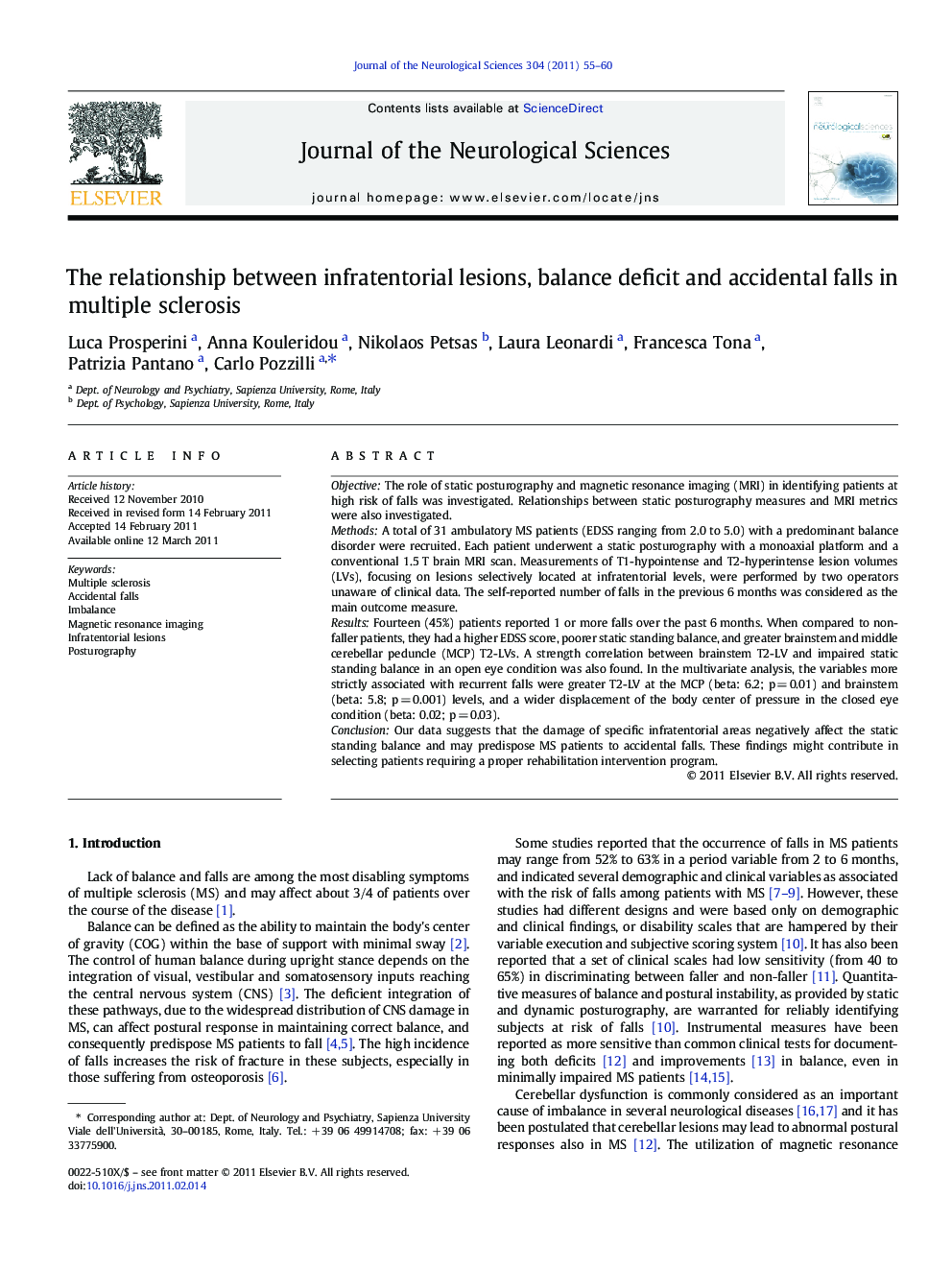| Article ID | Journal | Published Year | Pages | File Type |
|---|---|---|---|---|
| 1914234 | Journal of the Neurological Sciences | 2011 | 6 Pages |
ObjectiveThe role of static posturography and magnetic resonance imaging (MRI) in identifying patients at high risk of falls was investigated. Relationships between static posturography measures and MRI metrics were also investigated.MethodsA total of 31 ambulatory MS patients (EDSS ranging from 2.0 to 5.0) with a predominant balance disorder were recruited. Each patient underwent a static posturography with a monoaxial platform and a conventional 1.5 T brain MRI scan. Measurements of T1-hypointense and T2-hyperintense lesion volumes (LVs), focusing on lesions selectively located at infratentorial levels, were performed by two operators unaware of clinical data. The self-reported number of falls in the previous 6 months was considered as the main outcome measure.ResultsFourteen (45%) patients reported 1 or more falls over the past 6 months. When compared to non-faller patients, they had a higher EDSS score, poorer static standing balance, and greater brainstem and middle cerebellar peduncle (MCP) T2-LVs. A strength correlation between brainstem T2-LV and impaired static standing balance in an open eye condition was also found. In the multivariate analysis, the variables more strictly associated with recurrent falls were greater T2-LV at the MCP (beta: 6.2; p = 0.01) and brainstem (beta: 5.8; p = 0.001) levels, and a wider displacement of the body center of pressure in the closed eye condition (beta: 0.02; p = 0.03).ConclusionOur data suggests that the damage of specific infratentorial areas negatively affect the static standing balance and may predispose MS patients to accidental falls. These findings might contribute in selecting patients requiring a proper rehabilitation intervention program.
